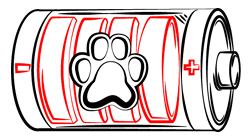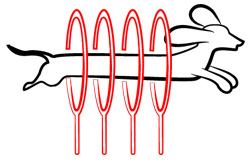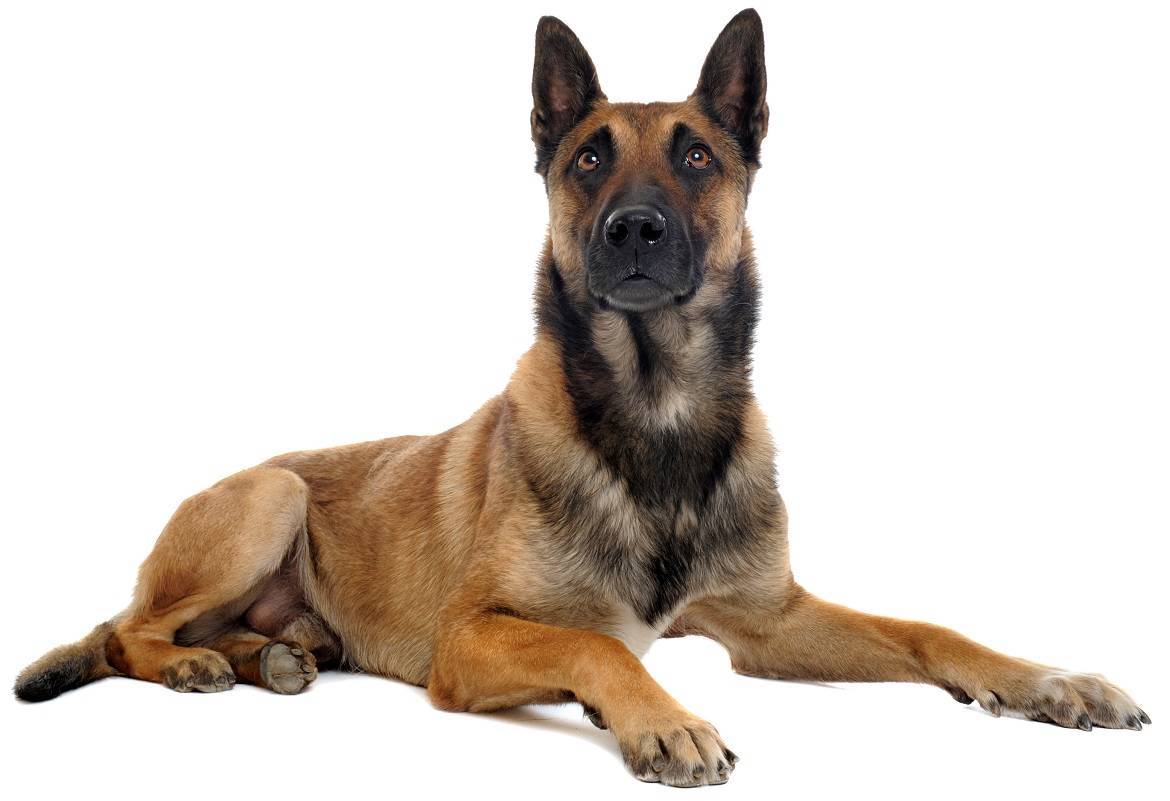
Paws ‘N’ Pups Quickview
Size
| Energy Level
| Trainability
| Paws ‘N’ Pups Rank
|
Characteristics
| Physical Characteristics: Height: 22-26” Weight: 40-80 lbs. Energy Level: High – Very High | The American Kennel Club recognizes the Belgian Malinois in the following colors:
Black masking is common among these colors. |
| Health & Longevity: 12-14 years Breeders screen for the following conditions:
Because of their muscle to fat ratio, Malinois are sensitive to anesthesia; before any surgical procedure, be sure that the veterinarian is aware of this and experienced in safely monitoring sensitive breeds. | |
Temperament & Train-ability
Athletic, agile and intense, the Belgian Malinois is the short-coated variety of Belgian shepherd dogs; the other varieties are the Groenendael (long coated black, known as the Belgian Shepherd in the US), the Tervuren (long coated sable) the Laekenois (wirehaired). Challenging to live with, this is a breed suited only to those with much experience. Like many herding breeds, the Mal tends to move naturally in circles. A Mal requires a near full time commitment to training, supervising, and exercising – both his body and mind, every single day. Without adequate exercise and stimulation, they can be prone to obsessive-compulsive behaviors, land-shark level destruction and barking. This breed carries strong protective instincts, and is reserved and watchful with strangers.
Malinois are not suited to apartments, condos, those with small yards or homes where they will be alone all day. Many can live with other dogs if raised around them, but dog aggression is common, particularly same sex aggression. Although some Mals are family dogs, many find the activities of children far too stimulating, and will herd and nip at the children; they are generally not recommended as family dogs. Choosing a breeder, while always important, is critical in this breed. Working line Malinois are not pets, and should only be purchased by experienced professionals in police, military or dog bite sports. Shyness and spookiness runs in some lines, and due to their high prey drive, most Mals are not good with cats or small animals. Those up to the task of living with this demanding breed find in him a deeply devoted dog.
Malinois are intelligent, sensitive and quick of mind and body, leading some people to think they would be easy to train. The fact is, Mals require a high degree of skill to handle and train. Impeccable timing, finesse and the ability to remain calm in any situation are needed. They are physically so fast that they can be off in four different directions before you have a chance to reward the behavior you liked. Their quick minds pick up on things you didn’t even realize you were doing. They can easily learn very wrong things. If you have the skills to train a Mal, you can achieve anything they are physically capable of doing. Their heart and work ethic are beyond compare.
Becoming emotional with a Mal can backfire; it is not surprising in the Mal world to have a dog that, when aroused or frustrated, redirects aggression on his handler. They require a balance of positive reinforcement and very clear boundaries. Mals have their own mind, but heavy corrections will either shut them down or cause a redirected bite. If you are an emotional person or are easily frustrated, this is not the breed for you. Malinois are successful in a variety of competitive venues; obedience, herding, and protection sports to name a few.
Grooming
Malinois carry a short double coat, and many have a small amount of feathering on the backs of legs. A straight, hard topcoat sits over a soft undercoat. Although an easy coat to care for, Mals shed a lot. Twice a year, spring and fall, they will “blow” their entire coat, which results in unbelievable amounts of hair everywhere. Daily brushing during these times will keep excess hair from covering your home. The rest of the year, weekly brushing will keep loose hair contained and maintain healthy skin and coat.
Ears must be cleaned regularly, and toenails should be trimmed; even if your Mal wears their nails down, you will want to maintain the ability to handle their feet, especially useful as they age, when wear to the nails typically slows down. Teeth must also be checked and cleaned regularly.
Diet
The amount fed will vary depending on age, activity level, and type of food fed; on average, a Mal will eat 2-3 cups of food per day, which should be fed in two meals. A constant supply of fresh, clean water must always be available.
Looking for a Belgian Malinois?
 Find A Belgian Malinois Breeder |  Belgian Malinois Puppies For Sale |  Adopt A Belgian Malinois |
Cost
Costs vary wildly for Malinois; dogs can be found for $700-$2,000, going up to $16,000-$20,000 and more for dogs trained or partially trained. Because this is such a difficult breed to live with, breed rescue organizations often have screened dogs available from people who couldn’t make it work. Adoption fees vary widely, but are generally in the $200-$500 range.
Paws ‘N’ Pups Ranking
Paws ‘N’ Pups ranks every breed out of 4 with 1 being easiest to integrate into your life and 4 being the toughest – The lower the ranking the better.
Ranking takes into account a few basic factors such as cost, skill level needed, high vs. low maintenance, and how critical regular training is to success. The Malinois is a solid 4; costs are often on the high side, but more importantly, this breed requires skill and experience, is high maintenance and ongoing training is a necessity.
Breeds Similar To Belgian Malinois
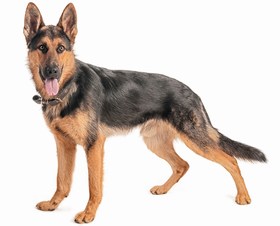 German Shepherd | 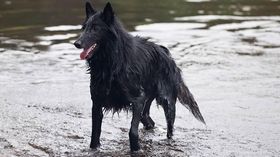 Belgian Sheepdog | 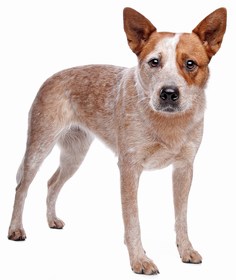 Australian Cattle Dog | 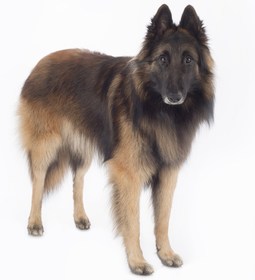 Belgian Tervuren |


